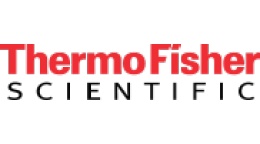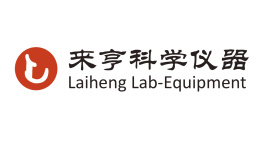方案详情文
智能文字提取功能测试中
AIP ADVANCES 8, 047704(2018) 047704-2 Carrillo et al.AIP Advances 8, 047704 (2018) “corresponding author: joanjosep.sunyol@udg.eduOAuthor(s) 20172158-3226/2018/8(4)/047704/78, 047704-1 Structural and magnetic behavior of Fe(Nb,Zr) rich alloys produced by mechanicalalloying A. Carrillo, L. Escoda, J. Saurina, and J. J. Sunol Citation: AIP Advances 8, 047704 (2018); View online: https://doi.org/10.1063/1.4994144View Table of Contents: http://aip.scitation.org/toc/adv/8/4 Published by the American Institute of Physics Articles you may be interested in Influence of spark plasma sintering parameters on magnetic properties of FeCo alloy AIP Advances 8, 047705 (2017);10.1063/1.4993529 Effects of severe plastic deformation on the magnetic properties of terbium AIP Advances 8, 048103 (2017); 10.1063/1.4998292 A. Carrillo, L. Escoda, J. Saurina, and J. J. Sunol EPS, C/Univesritat de Girona 4, University of Girona, 17003 Girona, Spain (Received 4 July 2017; accepted 7 August 2017; published online 12 October2017) Fe8oNbzB12Cui and Fe8o(NiZr)7B12Cui, nanocrystalline alloys were synthesized intwo high-energy ball milling devices (planetary, shaker). The microstructure, thermaland magnetic properties of the milled powders were characterized by X-ray diffraction(XRD), differential scanning calorimetry (DSC) and vibrating sample magnetometry(VSM); respectively. Milling device influences the microstructure and properties offinal products. The results suggest more energetic milling in shaker mill. The mainphase is always bcc Fe rich solid solution. Nevertheless, in Fe8oNbzB12Cuj alloyminor Nb(B) phase is found after shaker milling and in Fego(NiZr)7B12Cuj alloya low crystalline size Zr rich phase after planetary milling. Crystalline grain sizeranges between 9.5 and 15.1 nm; lower values correspond to alloys with a secondminor phase. Coercivity values ranges between 28.6 and 36.9 Oe. C 2017 Author(s).All article content, except where otherwise noted, is licensed under a CreativeCommons Attribution (CC BY) license (http://creativecommons.org/licenses/by/4.0/).https://doi.org/10.1063/1.4994144 INTRODUCTION Fe-M-B alloys with M an early transition metal (so called Nanoperm) are known to be usuallysoft-magnetic materials due their high saturation magnetization, good permeability and low mag-netocrystalline anisotropy, Makino et al. (1997). These alloys are generally obtained as amorphousby rapid solidification techniques and nanocrystalline structure was found after an ulterior anneal-ing, Skorvanek et al. (1999).On the other hand, these compositions can be also obtained directly asnanocrystalline grains by mechanical alloying (MA), Blazquez et al. (2014). MA is a solid-state pow-der processing technique that can produce a variety of equilibrium and non-equilibrium alloy phasesat a nanoscale level, Sunol etal. (2004). During MA of Fe rich alloys, an important fraction of grainsboundaries is created leading, generally, to the apparition of novel physical properties, especially,magnetic ones. Likewise, in the last decades, many researchers have been carried out experimentalstudies to investigate the alloying effect of systems with three, four or even more elements, Miglieriniet al. (2016), Hocine et al. (2017), Kong et al. (2011). One option is the addition of a minor amountof copper as in Finemet alloys. In this work we analyze the nanostructure, thermal stability andmagnetic response of two Fe(Nb,Zr) rich alloys produced by mechanical alloying. The competitionduring alloying between different elements sometimes is not well understand and therefore needsmore carefully investigations. Furthermore, alloying is also influenced by milling processing param-eters and devices. For it, milling was performed in two milling devices for 80 hours to detect theirinfluence on milled nanostructured samples. EXPERIMENTAL Mechanical alloying was carried out in two high-energy ball milling devices: a) planetary ballmill (Fritsch Pulverisette P7) and b) shaker mill (SPEX 8000). Milling was performed starting from pure element and compound powders. Fe of 99.7% purity, with a particle size under 8 um; Nb of99.85% purity, with a particle size under 74 um; Cu 99.8% purity, particle size under 45 um, B of99.6% purity, with a particle size 50 um; and prealloyed Ni70Zr30 powders (purity of 99.9% andparticle size>150 um). The nominal compositions produced and analyzed were Fe8oNbzB12Cuj and Fe80(NiZr)7B12Cu1,labeled as A and B, respectively. In both devices, milling was performed during 80h in CrNi steel vialsand the powder to balls mass ratio was fixed at 1:5. The containers were sealed in a glove box with astationary argon atmosphere. The MA powders were thermally characterized by differential scanningcalorimetry (DSC) in DSC30 Mettler-Toledo equipment. X-ray diffraction (XRD) structural analysiswas carried out using D-500 Siemens equipment using Cu Ka radiation. Magnetic measurementswere performed by vibrating sample magnetometry (VMS) in a Lake-Shore device. RESULTS AND DISCUSSION The formation of the nanocrystalline structure by mechanical alloying was checked by X-raydiffraction. Figure 1 show the XRD patterns corresponding to the alloy A after 80 h milling. In alloymilled with SPEX only bcc-Fe rich solid solution phase was found. This phase is the main phase FIG. 1. XRD patterns of FeNbBCu alloy after 80h of milling. Up (P7), down (SPEX). in alloy milled in P7 device. Likewise, in this sample, a minor phase associated to Nb(B) rich solidsolution is also found. In alloys with Fe and B milling sometimes favors the apparition of Fe-Bcom-pounds, but in Nb-B milling the Nb(B) rich phase here detected was also found in the literature, Izumietal., 2006. The reaction between B and Nb is related to the negative enthalpy of mixing:~-39 kJ/mol.This fact indicates that milling with SPEX allows to the formation of a unique phase whereas probablyadditional milling time is needed in P7 device, as it was obtained in Fe-Nb-B milled alloys by Alleget al.,2010. This seems indicate a higher milling intensity and energy transfer to the sample in SPEXdevice. Figure 2 show the XRD patterns corresponding to the nanocrystalline alloy B obtained after 80 hmilling. In this alloy, the bcc Fe based phase was also found. The main difference is that Zr richnanocrystalline solid solution was found in sample milled with SPEX. This Zr phase was previouslyfound in other FeZr based alloys, Pilar et al. (2008). In the FeNiZrBCu alloy, P7 milling is moreeffective to obtain a single nanocrystalline phase and milling in SPEX device produces the formationof a Zr phase coexisting with the nanocystalline main phase. Nb and Zr atoms have high atomic radiusand this fact does not favor its introduction in the solid solution, Pilar et al. (2007). The microstructural and structural parameters were obtained, from the Rietveld refinement ofthe XRD patterns, by applying the MAUD Program, Lutterotti et al. (1999). Results of the mainbcc-Fe rich phase are given in Table I. The lattice parameter is always higher that 0.2856 nm FIG.2. XRD patterns of FeNiZrBCu alloy after 80h of milling. Up (P7), down (SPEX). TABLE I. Lattice constant, a, crystalline size, L, microstrain, e, and density of dislocations, p. Sample a (nm) L(nm) e(%) p(1015m2) A (P7) 0.28832(3) 9.9(4) 0.66(5) 9.1(7) A (SPEX) 0.28694(2) 15.1(9) 0.6(1) 5.5(9) B (P7) 0.28706(2) 13.4(5) 0.59(6) 6.2(6) B (SPEX) 0.28717(3) 9.5(2) 0.40(3) 5.9(4) (pure bcc Fe) indicating the formation of a solid solution. All alloys are nanocrystalline (crys-talline size range between 9.5 and 15.1 nm). Lower values were found in samples with a minorphase. Thus, as increasing the content of Nb and Zr atoms inside the solid solution, a higher grainsize was achieved. Microstrain values ranged between 0.40(3) and 0.66(5), values similar to thosefound in the literature for Fe rich ball milled alloys, Alleg et al. (2013). Furthermore, the density ofdislocations has been also calculated taking into account the expression given by Williamson andSmallman et al. (1956). The values are slightly lower than dislocation density limit in metal achievedby plastic deformation (1016/mfor edge dislocations), Eckert et al. (1992). The general character of the DSC traces for all samples is similar. Figure3 show the resultscorresponding to alloy A milled for 80 h. The exothermic process at ~200 K is due to structuralrelaxation of milled alloy. The broad exothermic process starting at ~250-300 K might be due toearly surface crystallization (particle surface) coupled with internal stress, Ipus et al. (2013).Themain crystallization process (detected in alloy milled in SPEX at ~ 500 K) is related to the crys-talline growth of the bcc Fe phase. Figure 4 show DSC scans of alloy B. The broad exothermicprocesses detected by DSC correspond to different Fe environments probable favored by Ni addi-tion in alloy B, Sunol et al.(2007). In sample milled in P7 device the small exothermic peak at~350 K is linked to crystalline growth of the bcc Fe rich phase. Likewise, in alloy B milled inSPEX a very intense crystallization peak (~550 K) is found. As higher is the temperature of thecrystalline growth exothermic peak, higher is the thermal stability of the nanocrystalline alloy frontcrystallization. The behavior here found is different than crystallization from amorphous phase. Thecrystallization of as-quenched amorphous ribbons is reported by Makino et al. (1994) in Fe-X-B(X= Zr, Hf or Nb) alloys. The amorphous phase crystallizes in a two-stage crystallization pro-cess in which a single bcc Fe nanocrystalline phase appears after the first stage, and coarse bcc Fegrains with intermetallic phases appear after the second stage. The reported temperature of the sec-ond crystallization stage (>1000 K) is higher than the maximum temperature achieved in our DSCequipment. FIG. 3. DSC scans of FeNbBCu alloy after 80h of milling. FIG. 4. DSC scans of FeNiZrBCu alloy after 80h of milling Magnetic hysteresis cycles, at room temperature, were shown in figures 5 and 6 corresponding toalloys A and B, respectively. Such sigmoidal hysteresis cycles are usually observed in nanostructuredsamples with small magnetic domains. This is due not only to the presence of structural distortionsinside grains, but also to a higher density of nanocrystalls which hinder the domain wall motion.Results are given in Table ⅡI. All the studied samples present in the nanocrystalline state ferromag-netism at room temperature and have low coercivity, He, values (ranged between 28.6 and 36.9 Oe)which are the most important requirements for a soft magnetic material. Coercivity values are similarto those found in literature, Ipus et al. (2013). Lower coercivity was found in the two samples withonly one crystalline phase (higher difference in alloy B). Thus, second phase is not as soft magneticthan Fe rich bcc main phase and provokes an increase of He, There are other considerations to betake into account. As regarding boron element influence, sometimes boron inclusions were formed;Ipus et al. (2009). These inclusions can be not detected by XRD favoring the hardening of the alloy.Likewise, an amount of niobium/zirconium can remain in the grain boundaries. The decrease of the saturation magnetization, Ms, was measured in alloy A milled in SPEX. Thisdecrease usually suggests remarkable change of the magnetic moment during the alloying due to thechange of the nearest neighbor configuration of the magnetic element, Fe. This effect is coherentwith the existence of non-magnetic niobium and boron atoms in the vicinity of iron sites reducing the FIG. 5. Hysteresis loops at room temperature of FeNbBCu alloy after 80h of milling. 047704-6 FIG. 6. Hysteresis loops at room temperature of FeNiZrBCu alloy after 80h of milling. TABLE II. Coercivity, He, and magnetization of saturation, Ms. Sample He (Oe) Ms(emu/g) A (P7) 30.7(4) 155.6 A (SPEX) 29.2(4) 105.3 B (P7) 28.6(4) 146.1 B (SPEX) 36.9(5) 162.6 magnetic moment, Alleg et al. (2013). In alloy A milled in P7 a big amount of minor elements arein Nb(B) phase detected by XRD. Minor differences were found in alloy B. Slight diminution in themagnetization of saturation is due to highly disordered Zr rich phase. It is known that the saturationof magnetization increases as increasing crystalline fraction, Ipus et al. (2013). Thus, milling deviceinfluences soft magnetic behavior of the final product. Furthermore, usually MA samples have always higher coercivity values than samples preparedby other routes, for example melt-spinning, Tsepelev et al., 2017. Nevertheless, these nanocrystallinematerials (ribbon shape) have limited applications due to restriction on core winding process, Shyniet al. (2015). In MA alloys the decrease of the grain size to the nanoscale favors soft magneticbehavior. Nevertheless, MA provokes the increase of microstrain and, therefore, of coercivity. Oneoption to reduce microstrain and coercivity is the annealing of the milled powders. It is necessary theoptimization of the annealing process to reduce microstrain level (and coercivity) without a significantincrease of crystalline size (and preventing the formation of undesired phases).The main problemis that coercivity values lower than 100 KA/m are not achieved. One option is the ball milling ofribbons,Torrens-Serra et al., 2009. CONCLUSIONS Two nanocrystalline Fe8oNbzB12Cuj (A) and Fe8o(NiZr)7B12Cui (B) nanocrystalline alloyswere synthesized in two (planetary, shaker) high-energy ball milling devices. Nanocrystalline sizeranged between 9.5 and 15.1 nm. Lower crystalline size was found in samples with a second minorphase. Milling on shaker mill favors the formation of a unique phase in alloy A, and the formationof minor Zr rich solid solution in alloy B. All samples are soft magnetic at room temperature. Lowercoercivity values (28.6 and 29.2 Oe) were found in the two samples with only one crystalline phase.Thus, in soft ferromagnetic alloys produced by mechanical alloying, final product microstructureand the material properties depends of milling device. Results seem indicate that shaker mill is moreenergetic. ACKNOWLEDGMENTS Financial support from Spanish MINECO under project MAT2016-75967-P is gratefullyacknowledged. Alleg, S., Hamouda, A., Azzaza, S., Bensalem,R.,Sunol,J. J., and Greneche,J.M.,“Solid state amorphization transformationin the mechanically alloyed Fe28.9Nb2.2B69.9 powders,"Materials Chemistry and Phyics 122, 35-40 (2010). Alleg, S., Kartout, S., Ibrir, M., Azzaza,S., Fenineche, N. E., and Suniol, J. J.,“Magnetic, structural and thermal propertiesof the finemet-type powders prepared by mechanical alloying,” Journal of Physics and Chemistry of Solids 74, 550-557(2013). Blazquez, J. S., Ipus, J. J., Conde, C. F., and Conde, A.,“Evolution of Fe environments in mechanically alloyed Fe-Nb-(B)compositions,” Journal of Alloys and Compounds 615, S555-S558 (2014). Eckert, J., Holzer, J. C., Krill, C. E., and Johnson, W. L.,“Structural and thermodynamic properties of nanocrystalline fccmetals prepared by mechanical attrition,”Journal of Materials Research 7, 1751-1761 (1992). Hocine, M., Guittoum, A., Hemmous, M.,Martinez-Blanco,D., Gorria, P.,Rahal, B., Blanco,J. A., Sunol, J. J., and Laggoun,A.,“The role of silicon on the microstructure and magnetic behavior of nanostructured (Fe0.7Co0.3)100-xSix powders,"Journal of Magnetism and Magnetic Materials 422, 149-156 (2017). Ipus, J. J., Blazquez, J. S., Lozano-Pérez, S., and Conde, A.,“Microstrutural evolution characterization of Fe-Nb-B ternarysystems processed by ball milling," Philosophical Magazine 89(17), 1415-1423(2009). Ipus,J. J., Blazquez, J. S., Franco, V., and Conde, A., “The use of amorphous boron powder enhances mechanical alloying insoft magnetic FeNbB alloy: A magnetic study,” Journal of Applied Physics 113, 17A330(2013). Izumi, K., Sekiya, C., Okada, S., Kudou, K., and Shishido, T.,“Mechanochemically alloyed assisted preparation of NbB2powder,"Journal of the European Ceramic Society 26, 635-638 (2006). Kong, L. H., Gao, Y. L., Song, T. T., and Zhai, Q. J.,“Structure and magnetic properties of Nb doped FeZrB soft magneticalloys,”Journal of Magnetism and Magnetic Materials 323, 2165-2169 (2011). Lutterotti, L.,Matthies, S., and Wenk, H.R.,“MAUD: A friendly Java program for material analysis using diffraction,”IUCr:Newsletter of the CPD (1999). Makino, A., Suzuki, K., Inoue, A., and Masumoto, T.,“Magnetic properties and core losses of nanocrystalline Fe-M-B(M=Zr, Hf or Nb) alloys,”Materials Science and Engineering A 179, 127-131(1994). Makino, A., Hatanai, T., Inoue, A., and Masumoto, T.,“Nanocrystalline soft magnetic Fe-M-B (M=Zr, Hf, Nb) alloys and71their applications,"Materials Science and Engineering A 226,594-602(1997). Miglierini, M. and Hasiak, M., “Ion irradiation induced structural modifications of Fe81Mo8Cu1B10 nanoperm-type alloy,"Physica Sttus Solidi A - Applications and Materials Science 213, 1138-1144(2016). Pilar, M., Sufiol,J. J., Bonastre, J., and Escoda, L.,“Influence of process control agents in the development of a metastableFe-Zr based alloy,”Journal of Non-Crystalline Solids 353, 848-850 (2007). Pilar, M., Escoda, L., Sunol, J. J., and Greneche, J. M.,“Magnetic study and thermal analysis of a metastable Fe-Zr basedalloy: Influence of process control agents,” Journal of Magnetism and Magnetic Materials 320, e123-e127(2008). Skorvanek, I., Kovac,J., Marcin,J.,Duhaj,P.,and Gerling, R.,“Annealing effects on the magnetic properties of nanocrystallineFeNbB alloys,"Journal of Magnetism and Magnetic Materials 203, 226-228 (1999). Shyni, P. C. and Perumal, A.,“Structural and magnetic properties of nanocrystalline Fe-Co-Si alloy poders by mechanicalalloying,” Journal of Alloys and Compounds 648,658-666(2015). Sufiol, J. J., Gonzalez, A., Saurina, L., Escoda, L., and Bruna, P.,“Thermal and structural characterization of Fe-Nb-B alloysprepared by mechanical alloying,"Naterials Science and Engineering A 375-377, 874-880 (2004). Sunol, J. J., Gonzalez, A., Saurina, J., Escoda, L., and Fernandez-Barquín, L.,“Thermal and magnetic behavior of ananocrystalline Fe(Ni,Co) based alloy,” Journal of Non-Crystalline Solids 353, 865-868 (2007). Torrens-Serra, J., Bruna, P., Roth, S., Rodriguez-Viejo, J., and Clavaguera-Mora, M.T., “Bulk soft magnetic materials fromball milled Fe77NbzB15Cuj amorphous ribbons,"Intermetallics 17, 79-85 (2009). Tsepelev, V., Starodubtsev, Y., Konashkov, V., and Belozerov, V.,“Thermomagnetic analysis of soft magnetic nanocrystallinealloys,”Journal of Alloys and Compounds 707,210-213(2017). Williamson, G. K. and Smallman, R. E.,“Dislocation density in some annealed and cold-worked metals from measurementson the X-ray Debye-Scherrer spectrum,”Philosophical Magazine 1, 34-46(1956). 机械合金化(MA) 最早是由美国国际镍公司的本杰明(Benjamin)等人,于1969年前后研制成功的一种新的制粉技术,并被成功应用到弥散强化高温合金的制备中。从其严格定义上讲是指,金属或合金粉末在高能球磨仪中通过粉末颗粒与磨球之间长时间激烈地冲击、碰撞,使粉末颗粒反复产生冷焊、断裂,导致粉末颗粒中原子扩散,从而获得合金化粉末的一种粉末制备技术。时至今日,人们对机械合金化理论理解进一步加深,机械合金化所需的高能球磨机性能也进一步提升,其应用已扩展至非晶态合金、准晶、纳米晶以及非平衡态材料的研究。(图片来源于网络) 机械合金化过程 机械合金化是一个复杂的过程,要获得理想的相和微观结构,对实施机械合金化的高能球磨机提出了极高的要求,因此机械合金化也被称之为研磨应用的“珠穆朗玛峰”。在大多数情况下,在有限的球磨时间内仅仅使各组元在那些相接触的点、线和面上达到或趋近原子级距离,并且最终得到的只是各组元分布十分均匀的混合物或复合物。当球磨时间非常长时,在某些体系中也可通过固态扩散,使各组元达到原子间结合而形成合金或化合物。(图片来源于网络) 机械合金化利器——SPEX三维∞高能球磨仪 目前在全世界范围内,已有数千篇使用SPEX高能球磨仪做机械合金化和纳米材料研究的高端文献,甚至可以说,每个做机械合金化研磨的实验室里,都至少有一台SPEX三维∞式高能球磨仪。SPEX发明了三维∞式研磨方式,高能效,可连续工作10000分钟以上,完美契合机械合金化需求,在研磨界没有其他厂家的性能与之匹敌,成就SPEX在研磨界的领导地位。首先,机械合金化需要极高的动能,球磨设备需要具备极高的研磨能力。为了增加研磨介质,研磨罐和物料粉末撞击力和摩擦力,为物料粉末达到原子间结合提供提供极高的动力源泉,SPEX高能球磨仪采用更有效的∞式三维运动方式,其碾磨能量密度达到传统行星式二维运动的6-8倍。其次,研磨时间也是影响机械合金化效果的重要因素。随着研磨的进程,合金化程度会越来越高,因此需要球磨设备提供足够长时间的稳定研磨能力;SPEX高能球磨仪机械工作耐久性极限达10000分钟以上,充分保证了机械合金化进程的有效性。最后,研磨温度也是机械合金化进程中必须考量的重要因素。因为无论机械合金化的最终产物是固溶体、金属间化合物、纳米晶、还是非晶相都涉及到高温扩散降解问题,研磨温度越高,合金化产物高温扩散降解越快,合金化效率越低下;SPEX独特专利设计的∞式三维运动方式,更高比例输出正面撞击力,而非摩擦力,因此热生成更低,合金化效率更高。
关闭-
1/8
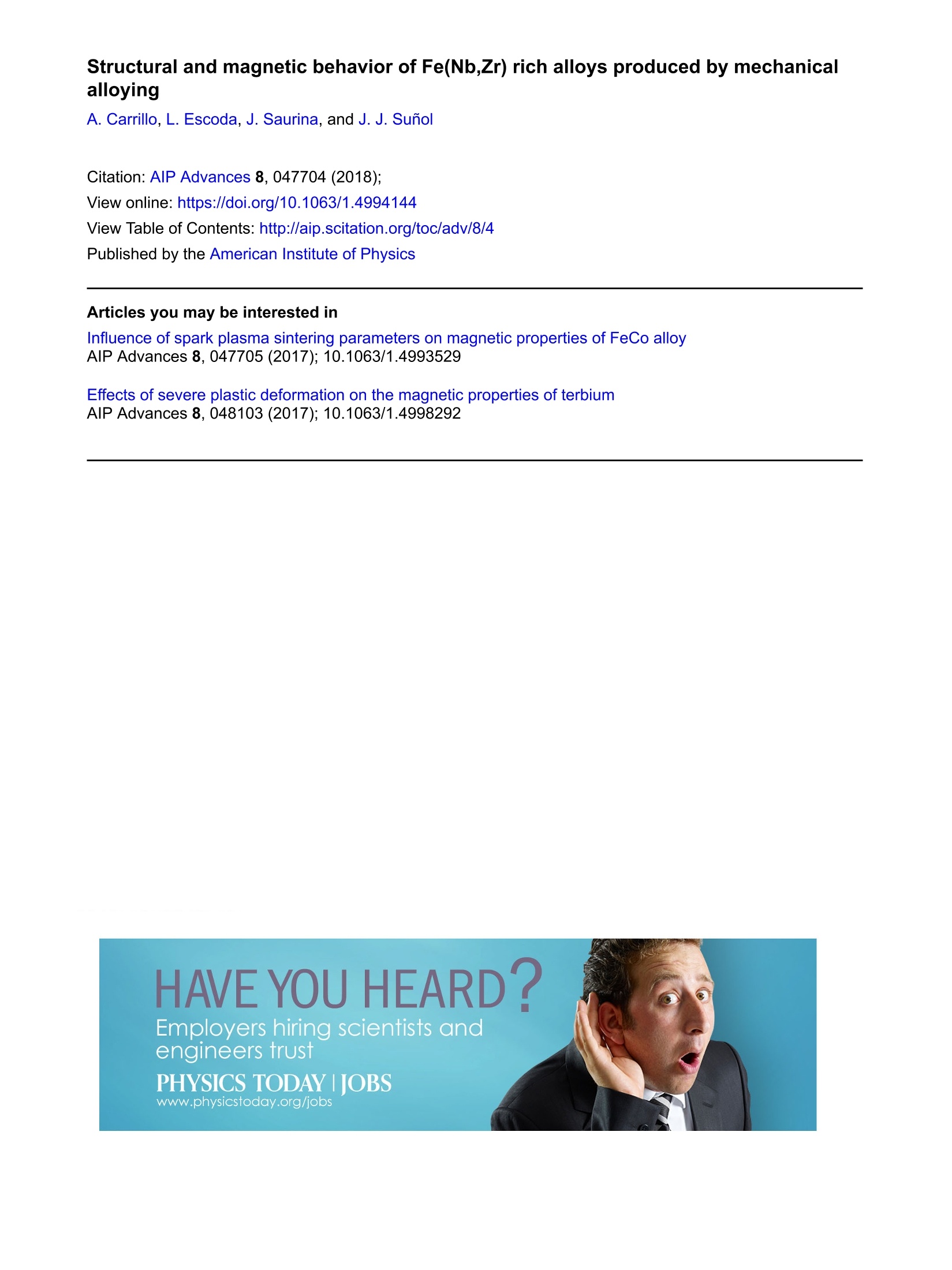
-
2/8

还剩6页未读,是否继续阅读?
继续免费阅读全文产品配置单
培安有限公司为您提供《合金粉末中研磨过程检测方案(研磨机)》,该方案主要用于其他中理化分析检测,参考标准《暂无》,《合金粉末中研磨过程检测方案(研磨机)》用到的仪器有SPEX BM-450高能量球磨机/球磨仪/研磨仪(原8000D)。
我要纠错
推荐专场
研磨机、研磨仪、粉碎机、球磨机
更多相关方案


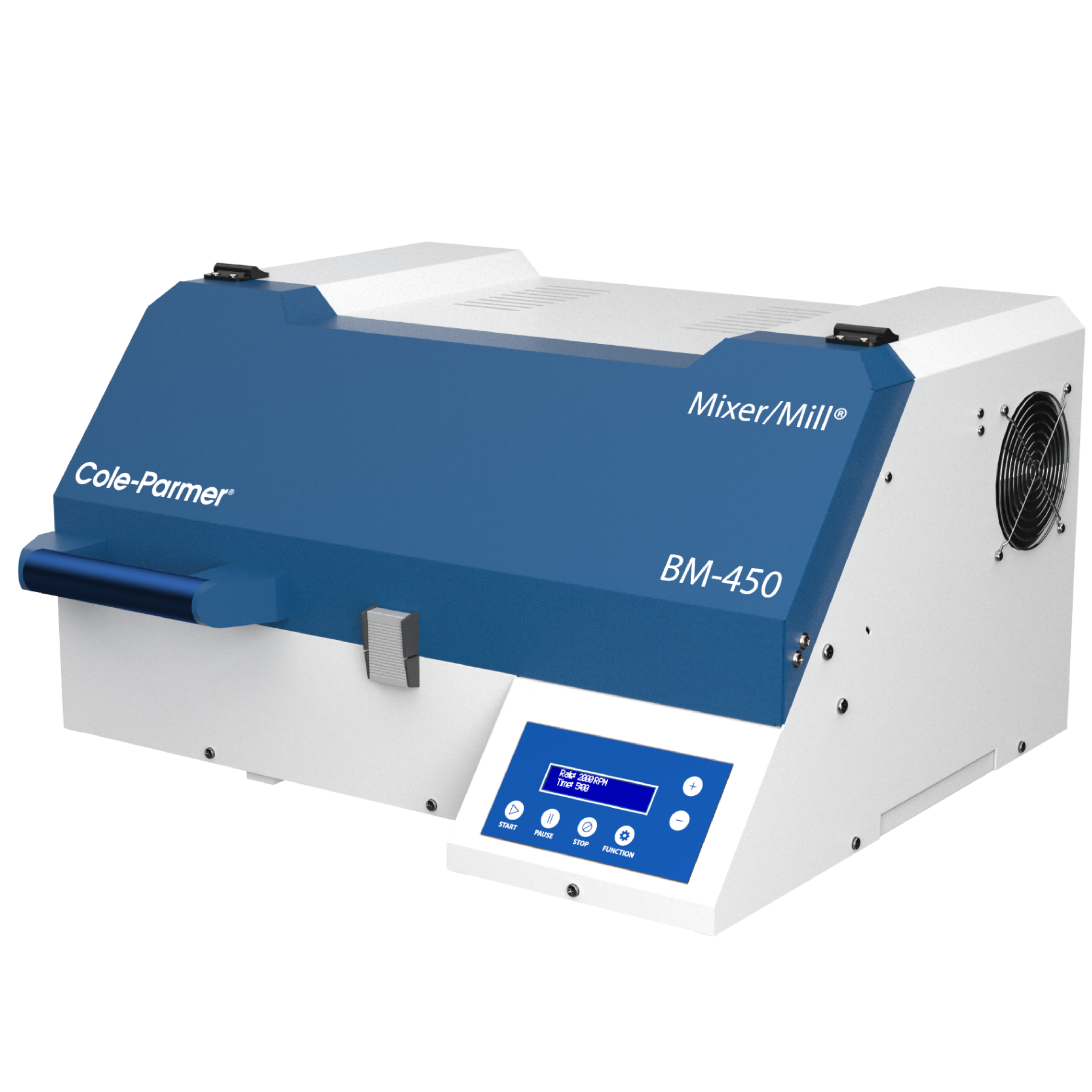
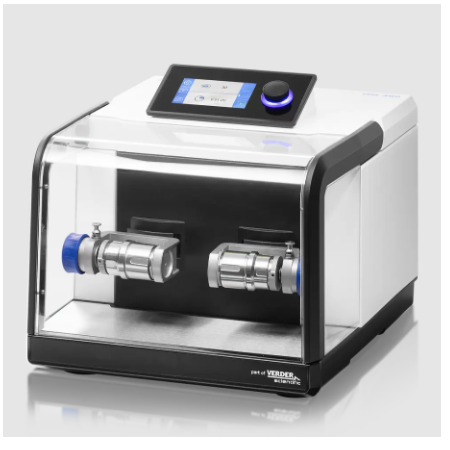
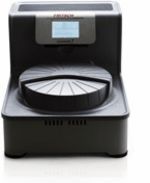
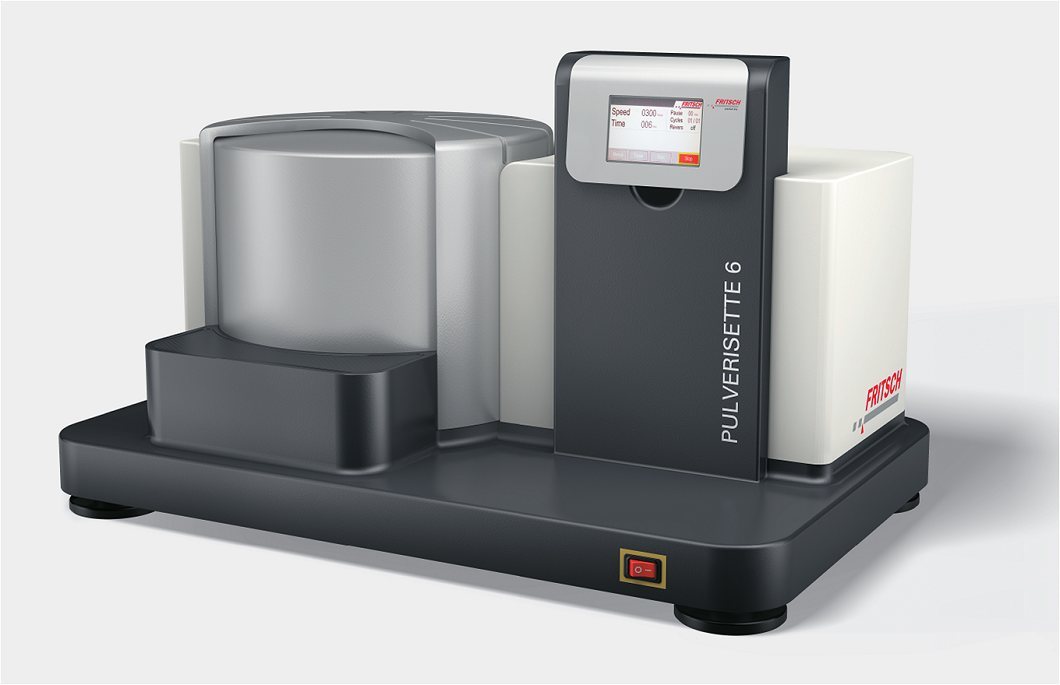
 咨询
咨询





